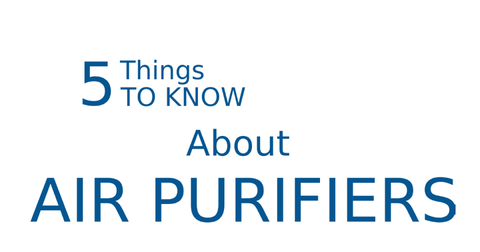- Home
- Shop
- Replacement Filters
- Commercial
- About Us
- Learn More
- Contact Us
- Clean Air News
- Home
- Shop +
- Replacement Filters
- Commercial +
- About Us +
- Learn More +
- Contact Us
- Clean Air News
- Sign in
- 1-888-852-8247 or 514-335-4277

There are many industry measurements in air purification that gauge performance such as CFM (Cubic Feet Per Minute). This metric provides a view into the efficiency related to the air purifier, by measuring how many cubic feet per minute this air purifier can scrub. Another measure that is vital to improving your indoor air quality is called dwell time
We breathe in and out, day and night, about 12 to 20 times or more per minute. You may take even more breaths, depending on your activity level. That means you take 17,000 to 30,000 breaths per day! You need air to provide your body with oxygen, and your respiratory system helps to get rid of toxins in the body. Breathing is as essential to life as the heart is to pump blood through your veins. But what happens if the air around you is polluted? If you don’t like the taste of something you are eating, you can choose to stop eating it.
Unfortunately, even if you know the air around you is contaminated or bad for you, you won’t be able to simply stop breathing. You can choose is to surround yourself with the best air possible. One way of eliminating toxic pollutants in the air is to run an indoor air purifier in your bedroom or in the areas where you spend most of your time.
When you look up air purifiers online, you will find many different options, from low-cost models in your neighbourhood retail store to high-end contraptions that come with a hefty bill. Just with anything you want to buy, make sure you do your research and don’t buy the wrong unit.
A good air purifier needs to be able to address the widest range of indoor air pollutants in your surroundings. It needs to have the right filters to target the pollutants that affect you most. Before we get into the five air purifiers you should never buy, let me take a few moments to talk about the dangers of breathing polluted air:
In some industries, it’s a well-known fact that workers are exposed to toxic chemicals and fumes. Think about hair stylists in salons, welders, health care workers, and more. Even if you spend most of your time at home, the air that you breathe is contaminated to some degree.
EPA studies show that poor IAQ may be more dangerous than outdoor pollution. In many cases, the indoor air quality is two to five times worse than outdoor air, in some cases, even up to 100 times worse.
Remember the term “Sick Building Syndrome?” One of the problems is that indoor air pollutants come from many different sources. There are well-known pollutants such as pollen, dust and dust mites, tobacco smoke and wood smoke. Toxic pollutants can also emanate from the very materials and furniture that surrounds you. There is formaldehyde in particleboards, toxic fumes coming off paint, stains and other finishes, fabrics that have been treated… the list is very long.
You may also contribute to indoor air pollution inadvertently if you use many personal care products, apply harsh cleaning products, cook on a gas stove or get a lot of dry-cleaning done, for example. In modern construction buildings, these indoor air pollutants are often allowed to build up because the homes have been made so energy efficient and less leaky.
Indoor air pollution can affect people quite differently. Some are very sensitive to odors and chemicals. Others develop allergies to dust and other particles. Some do not seem to be affected at all for a long time. The people that are most at risk are babies and children because they are so low to the ground and they take more breaths than adults. The elderly also need to be careful.
The EPA warns that IAQ-related health effects can appear immediately in the form of allergic-like responses or much later in the form of chronic diseases or even cancer. That is why it is so important to assess the air we are breathing and to take steps to breathe cleaner air, if possible.
Here are some tips for you to consider when you look for the right air purifier. Air purifiers are not regulated by the government, and there are so many designs, filters and systems to choose from.
The air purifier that would be best for you depends on your surroundings, sensitivities and concerns.

The first air purifier to avoid is one that boasts a super strong motor. This seems illogical. After all, isn’t stronger better?
Not in this case.
When air is pushed through an air purifier at a high rate, the filters won’t be able to remove as many toxins, meaning you may be exposed to them longer.
If your air purifier uses a HEPA filter, a strong motor may actually prove damaging over time, as it will fray the strands making up the filter. That, too, will decrease the air purifier’s efficiency.
If your air purifier uses granular activated carbon for the removal of odors and chemicals, great. It is one of the most important filters out there.
But these filters also work best when the air is allowed to pass through at a slower rate. That way, the carbon can adsorb the highest amount of VOCs and toxic chemicals.
The second air purifier that you should never buy is one that comes with only one filter - even if it is a good one.
The pleated HEPA filter has been shown to remove 99.9 percent of particles that are 0.3 microns in size, which is great. These filters are important to people who are sensitive to dust, pollen and other particles.
But particles are all these HEPA filters are catching.
Chemicals and odors will pass right through, and they can affect your health and well-being in the long term.
According to the Canadian government, longer-term health effects of chemical exposure might include organ damage, weakening of the immune system, reproductive problems and birth defects, effects on the mental cognitive or physical development of children as well as cancer.
http://healthycanadians.gc.ca/healthy-living-vie-saine/environment-environnement/chemicals-chimiques-eng.php
The EPA also acknowledges that breathing polluted air can lead to short-term and long-term health effects.
Immediate effects are often similar to colds and may include sneezing, irritated eyes, throat and nose, difficulty breathing and more.
Breathing polluted air over a long period of time has been linked to serious and often fatal conditions, including respiratory diseases, heart disease, and cancer.
http://www.epa.gov/iaq/ia-intro.html
In order to remove airborne chemicals and gases, an air purifier needs more than just a HEPA filter.
A complete air purifier must include a deep-bed activated carbon filter that is packed with many pounds of carbon. Carbon is also used in water filters, gas masks and medical treatments to counteract poison.
It is the most effective filter media on the market to trap airborne chemicals, gases and odors. It can remove formaldehyde, traffic fumes, benzene, smoke as well as hundreds of other volatile organic compounds.
The third air purifier you should never buy is one that doesn’t have enough carbon.
As I mentioned earlier, activated carbon is the most important filter to get rid of chemicals and odors in the ambient air.
But just because a manufacturer states that the unit features an activated carbon filter, that does not mean it comes with enough carbon or that it comes with the right type of carbon.
Some manufacturers spray a thin layer of activated carbon over mesh and call that an activated carbon filter. Technically, they are right, but it won’t be effective for long.
Others offer a thin wall or box of activated carbon that also limits its efficiency and longevity.
An effective and long-lasting carbon filter features a deep bed of granular activated carbon and offers at least 2.5 inches of progressive diagonal filtration to maximize its filtration capacity.
This all makes sense once you understand how activated carbon works.
Activated carbon is made from organic materials such as charcoal, wood and coconut shell, heated up in the absence of air and crushed into granules.
It is then treated with oxygen, which opens millions of tiny pores between the carbon atoms and produces a large surface area for gases and odors to get adsorbed.
Adsorption means that pollutants attach themselves to the surface area of the carbon by way of chemical reaction.
Activated carbon has been proven good or effective in the adsorption of more than 200 chemicals and odors, including ozone, octane, formaldehyde, benzene, acetone, diesel fumes, nitroglycerine, organic chemicals, turpentine, toluene, sulfuric acid and smog.
One pound of activated carbon contains a surface area of approximately 100 acres.
Once it becomes saturated, activated carbon needs to be replaced. So, of course, the more carbon there is, the longer and more effective the air purifier will be.
The fourth air purifier you should avoid is one that is too generic. If a company only makes a few models, then that is what they will try to sell you.
But chances are, these air purifiers won’t address your needs perfectly. You need choices. You need a proper particle filter, a sizable carbon filter, the right kind of unit and the bells and whistles that provide cleaner air for you.
A person living in a hot and humid, flooding-prone area needs a very different air purifier than a person living in a city apartment with pets.
If you are uncertain about which air purifier, filters or options work best for you, call the company. They will ask the right questions to narrow down your choices and to meet your needs.
AllerAir, for example, offers more than 500 different units, but that doesn’t have to scare you off. The units are divided into series to make selection easier and there are guides you can consult. Still, calling the AllerAir team to discuss your options may still be your best bet.
For the right kind of air purifier, you should consider the size of the area, the type and severity of indoor air pollution, your preference in terms of free-standing or HVAC-attached air purifiers, your sensitivities (if applicable), budget and design.
